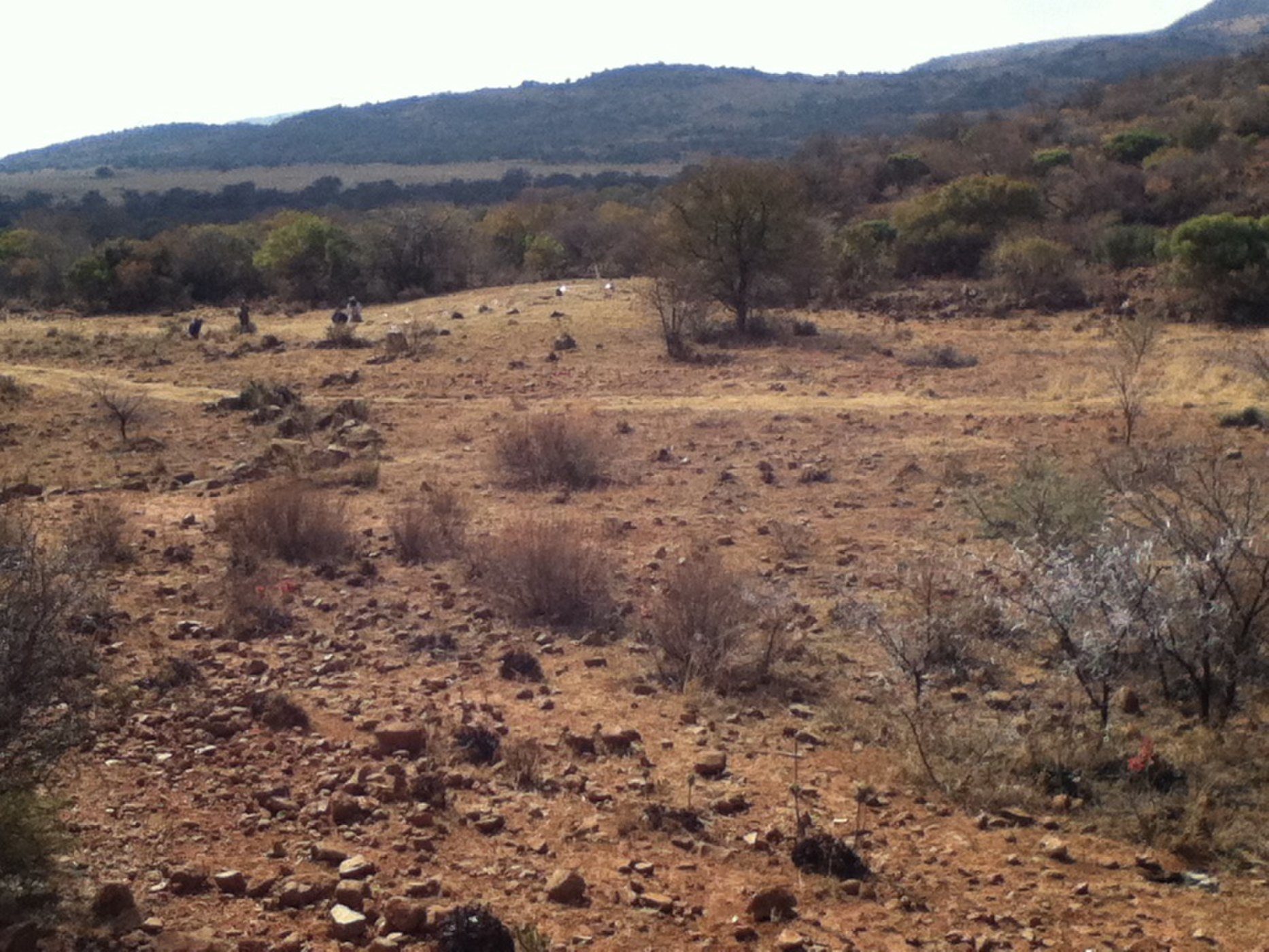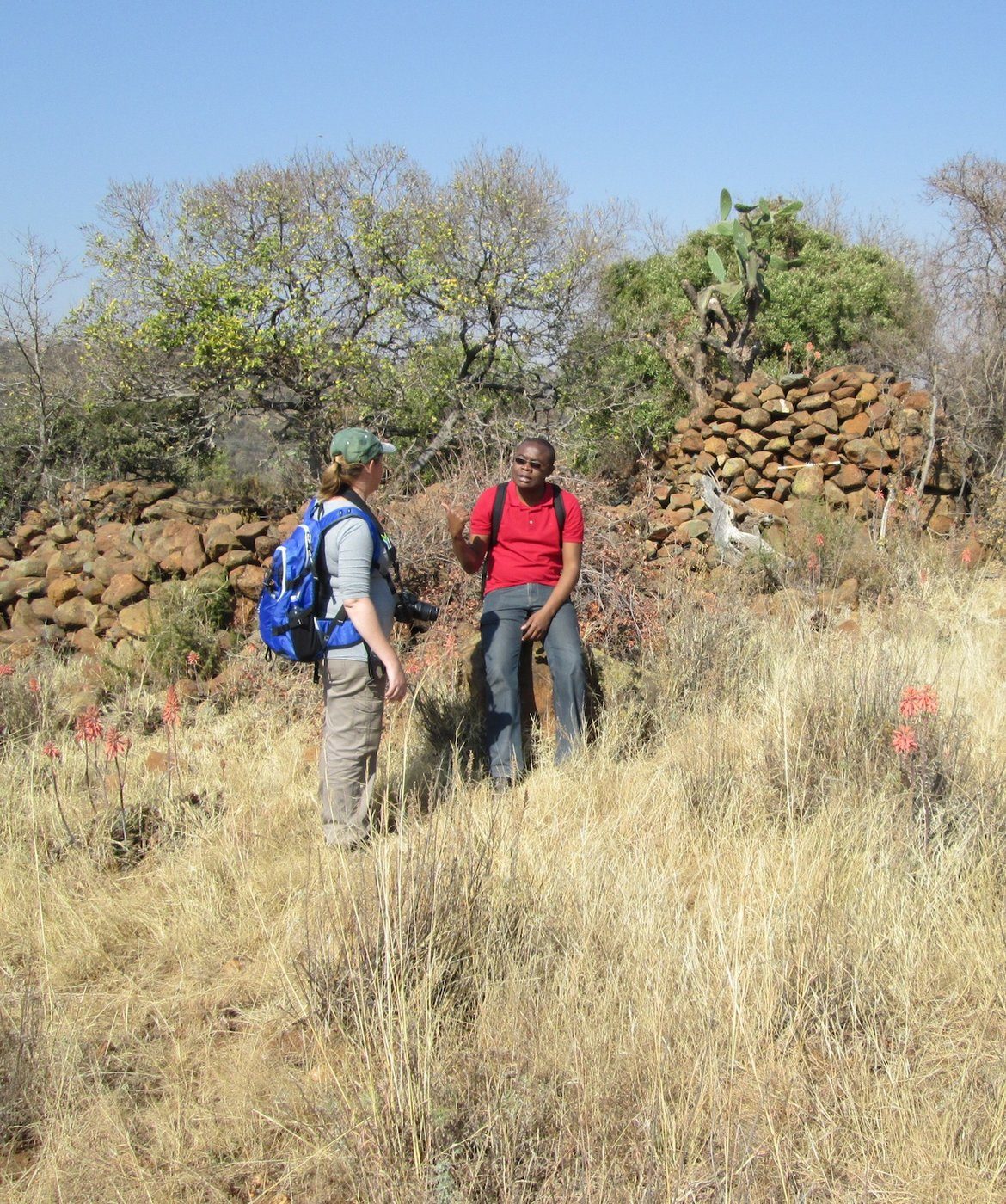
© Karim SadrThe vast area where the lost city, known as Kweneng, once stood.
The newly discovered city, called Kweneng, was once a thriving capital that existed from the 1400s until it was destroyed and abandoned, likely because of civil wars, in the 1820s, said Karim Sadr, a professor of archaeology at the University of the Witwatersrand, in South Africa.
However, it's not clear if this conflict immediately sounded the city's death knell. That's because some of the remaining structures date to between 1825 and 1875, "in what we call the terminal phase" of Kweneng, Sadr told Live Science.
Researchers have known about Kweneng since at least the 1960s, but they didn't realize its actual size until now, Sadr said. Revil Mason, the retired director of archaeological research at Witwatersrand University, discovered pre-colonial structures there during an aerial survey in 1968.
"He spotted a number of ruins, but far fewer than are actually present," Sadr said. The city is hidden under a thick layer of vegetation, Sadr said. But in 2012, Sadr analyzed satellite images from Google Earth, and found that Kweneng had
twice as many structures as previously realized. And now, with the new aerial survey using lidar - or light detection and ranging - Sadr and his colleagues discovered that "there were actually three times as many structures as Mason had initially identified," Sadr said.
For the recent survey, the researchers used a lidar machine to shoot billions of lasers at the ground. Once these lasers hit an object, be it a structure, a bird or a tree, they bounce back to the machine, which calculates the time it took to return. Ultimately, that time gives a distance, which the machine can use to create a 3D topographical map of the area.
"[We're] filling a huge historical gap, especially for southern Africa, because you know pre-colonial history of southern Africa has no written record," Fern Imbali Sixwanha, a doctoral student of archaeology at the University of the Witwatersrand,
told Africa News. "So, now we [are] starting to fill in the gaps using this lidar technology."
The lidar results revealed a greater concentration of ancient stone-walled structures than had been suspected - about 800 to 900 compounds in all. Given that each compound could have housed a few to many families, between 5,000 and 10,000 people were likely living there during the city's peak in 1820, Sadr said.
The researchers dated the structures based on their "characteristic architectural style," which are also found in other
historic African cities far to the west of Kweneng, Sadr said.

© Karim SadrThe researchers documented the structural remains of the lost city.
The Tswana, a group of people who still live in Botswana, South Africa and neighboring regions, would have lived in Kweneng. And since they didn't have a written language, findings like this one can shed light on the people's lives and perhaps, the architecture they used and how they set up cities. "It is the largest of the pre-colonial Tswana capitals that we know so far," Sadr said.
Moreover, it is the only known Tswana city that was occupied from the 1400s or 1500s, when it was just a few scattered homesteads, all the way to its pre-classic period in the 1600s,
when villages appeared, he said. "In its classic phase, between around 1750 and 1825, Kweneng grew into a city," Sadr said.
Reader Comments